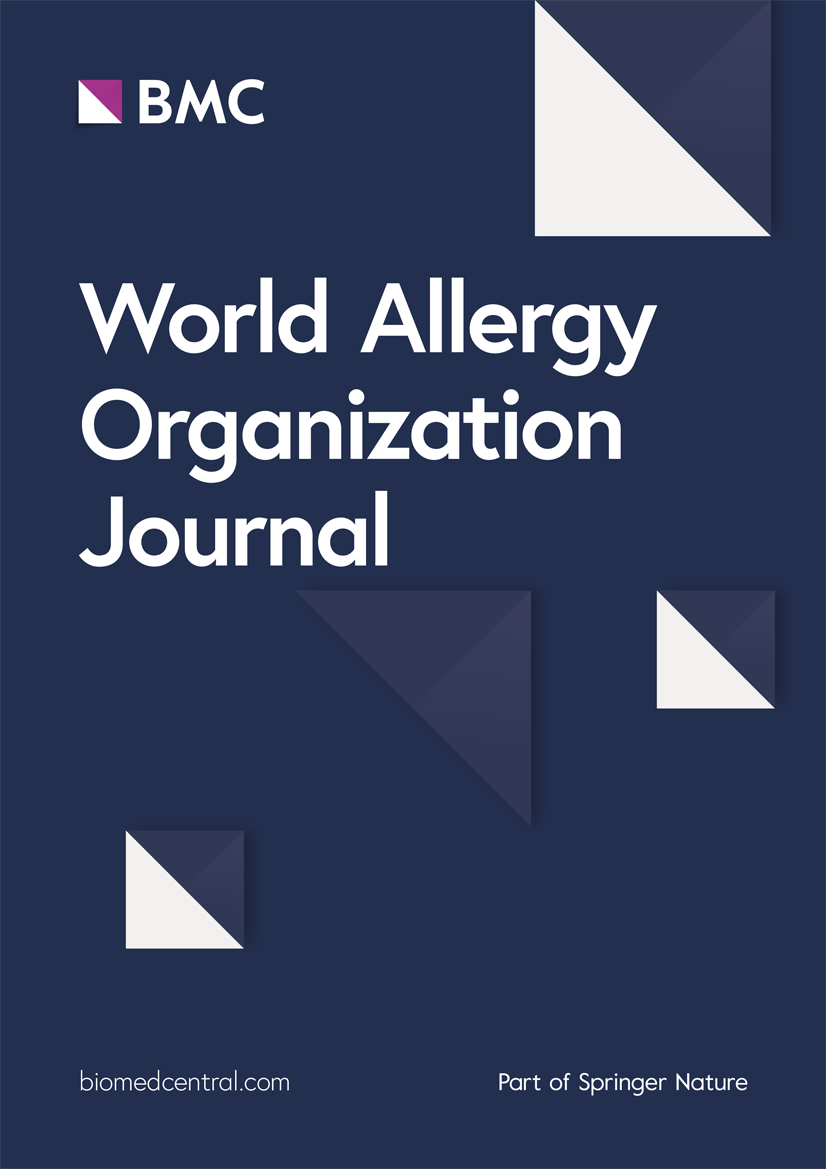Evaluating vaccination dosing strategies for SARS-CoV-2 in patients at high-risk for allergic reactions: Insights from vaccination campaign
IF 4.3
2区 医学
Q2 ALLERGY
引用次数: 0
Abstract
Background
The COVID-19 pandemic significantly increased the demand for allergy consultations to evaluate the risk of hypersensitivity reactions in patients either before receiving their first dose of an anti-SARS-CoV-2 vaccine (Group 1) or following suspected allergic reactions after vaccination (Group 2).
Methods
We conducted a retrospective analysis of patients referred to the Immunology and Allergy Unit of the Azienda Ospedaliera Ordine Mauriziano in Turin, Italy, between December 2020 and December 2022. Risk assessment was performed according to Italian and European guidelines, and allergy skin tests were administered when necessary. Patient data were cross-referenced with the SIRVA platform (Regional Vaccination Management Information System) to assess vaccine eligibility, administration, and outcomes.
Results
A total of 1222 patients were evaluated (mean age: 52 years; female-to-male ratio 4:1). In Group 1 (n = 914), 137 patients (15%) underwent skin testing, of whom 15 (1.6%) tested positive. Vaccination was recommended for 899 patients (98%), though 184 (20%) did not proceed. Among those vaccinated, 679 (74%) received additional doses, with 48% receiving a third and 11% a fourth dose. In Group 2 (n = 308), 104 patients (33%) underwent skin testing, with 9 (8%) testing positive. Vaccination without restrictions was recommended for 299 patients (97%), but 45 patients (15%) did not proceed. Among the remaining, 262 (85%) received a second dose, 183 (59%) a third, and 29 (9%) a fourth dose. Overall, 1198 patients (98%) had no specific contraindications to vaccination. Only 5 patients (0.4%) were completely exempted from vaccination due to confirmed sensitivity to both polyethylene glycol (PEG) and polysorbate 80 (PS80). An alternative vaccine was recommended for 19 patients; 16 of them proceeded with vaccination and tolerated it without adverse effects.
Conclusions
Our findings demonstrate that the majority of high-risk allergic patients can safely receive anti-SARS-CoV-2 vaccines following allergological evaluation. The rate of confirmed excipient allergy was very low, and vaccine adherence was comparable to the general population. This is, to our knowledge, the first study to longitudinally assess the number and types of vaccine doses administered to high-risk allergic individuals.
评估过敏反应高危患者的SARS-CoV-2疫苗接种剂量策略:来自疫苗接种运动的见解
COVID-19大流行显著增加了过敏咨询的需求,以评估患者在接种第一剂抗sars - cov -2疫苗之前(第1组)或接种疫苗后疑似过敏反应后(第2组)发生过敏反应的风险。方法回顾性分析2020年12月至2022年12月在意大利都灵国立毛里齐亚诺医院(Azienda Ospedaliera Ordine Mauriziano)免疫学和过敏科就诊的患者。根据意大利和欧洲的指导方针进行了风险评估,必要时进行了皮肤过敏试验。患者数据与SIRVA平台(区域疫苗接种管理信息系统)交叉引用,以评估疫苗的资格、管理和结果。结果共纳入1222例患者,平均年龄52岁;男女比例为4:1)。第1组(n = 914), 137例(15%)患者接受皮肤试验,其中15例(1.6%)阳性。建议899例(98%)患者接种疫苗,但184例(20%)未接种疫苗。在接种疫苗的人中,679人(74%)接受了额外的剂量,48%的人接受了第三剂,11%的人接受了第四剂。在第二组(n = 308)中,104例(33%)患者接受了皮肤试验,其中9例(8%)检测阳性。299名患者(97%)推荐无限制接种疫苗,但45名患者(15%)没有继续接种。在其余人中,262人(85%)接受了第二剂,183人(59%)接受了第三剂,29人(9%)接受了第四剂。总体而言,1198例患者(98%)没有特定的疫苗禁忌症。只有5名患者(0.4%)由于对聚乙二醇(PEG)和聚山梨酯80 (PS80)均确认敏感而完全免于接种疫苗。为19名患者推荐了替代疫苗;其中16人继续接种疫苗并耐受,无不良反应。结论本研究结果表明,大多数高危过敏患者经过敏学评估后可安全接种抗sars - cov -2疫苗。确认的辅料过敏率非常低,疫苗依从性与一般人群相当。据我们所知,这是第一个纵向评估高风险过敏个体接种疫苗剂量的数量和类型的研究。
本文章由计算机程序翻译,如有差异,请以英文原文为准。
求助全文
约1分钟内获得全文
求助全文
来源期刊

World Allergy Organization Journal
Immunology and Microbiology-Immunology
CiteScore
9.10
自引率
5.90%
发文量
91
审稿时长
9 weeks
期刊介绍:
The official pubication of the World Allergy Organization, the World Allergy Organization Journal (WAOjournal) publishes original mechanistic, translational, and clinical research on the topics of allergy, asthma, anaphylaxis, and clincial immunology, as well as reviews, guidelines, and position papers that contribute to the improvement of patient care. WAOjournal publishes research on the growth of allergy prevalence within the scope of single countries, country comparisons, and practical global issues and regulations, or threats to the allergy specialty. The Journal invites the submissions of all authors interested in publishing on current global problems in allergy, asthma, anaphylaxis, and immunology. Of particular interest are the immunological consequences of climate change and the subsequent systematic transformations in food habits and their consequences for the allergy/immunology discipline.
 求助内容:
求助内容: 应助结果提醒方式:
应助结果提醒方式:


